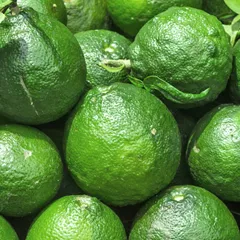Rebellious Liver Qi
The information provided here is not a replacement for a doctor. You shouldn't use it for the purpose of self-diagnosing or self-medicating but rather so you can have a more informed discussion with a professional TCM practitioner.
At a glance
Preliminary reading: What is a pattern? The concept of Qi The Liver in Chinese Medicine
Key attributes
Chinese name: 肝气逆 Pinyin name: Gān Qì Nì
Pattern nature: Full
Pattern hierarchy: Specific pattern under Rebellious Qi
Common combinations: Rebellious Liver Qi invading the Spleen Rebellious Liver Qi invading the Stomach
Causes
Precursor patterns: Liver Qi Stagnation
Common causes: 1. Emotional stress, 2. Eating habits
Diagnosis
Common symptoms: Belching Hiccuping Headaches Dizziness Irritability and six other symptoms
Pulse type(s): Wiry (Xian)
Tongue description: In light cases the tongue-body color may not change. In severe cases the sides will be Red.
Treatment
Treatment principle: Smooth the Liver, subdue Liver Qi.
Common formulas: Chai Hu Shu Gan San Si Ni San
Pathology
Most Organs' normal physiological Qi goes in one direction (up or down) and their pathological Qi normally goes toward the opposite direction.
The Liver is an exceptional one as its Qi goes in all directions, especially upwards. It is because it's responsible for ensuring the smooth flow of Qi throughout the body, in all Organs and in all directions.
Rebellious Liver Qi mostly refers to excessive Qi ascending and it causes symptoms like headache, dizziness and irritability.
In normal times Liver Qi travels horizontally to assists the the Stomach and the Spleen's digestive functions. However, when excessive Liver Qi invades the Stomach, it causes nausea, belching and vomiting. It is one of the precursor patterns for Stomach Qi rebelling upwards.
Excessive Liver can also invades the Spleen and gives rise to symptoms like diarrhoea or alternating constipation and diarrhea.
This pattern differs from Liver Qi Stagnation which gives rise to very pronounced emotional symptoms like irritability or anger. Here the emotional symptoms are milder but the digestive ones are much more pronounced. This is because, far from being slowed down like in Liver Qi Stagnation, the movement of Liver Qi is actually accentuated.
In Women breast distention is a common symptom because of the connection between the Liver and the breasts: when it rebels Liver Qi flows upward to the breasts instead of the contrary.
Causes
Precursor patterns: Rebellious Liver Qi can derive from Liver Qi Stagnation
Emotional stress: Anger, frustration, worry and resentment are all emotions which impact the Liver and may cause Liver-Qi to rebel.
Eating habits: The following bad eating habits may lead Liver Qi to rebel: eating in a hurry or when under stress, eating while working, getting angry at meal times and eating standing up.
Diagnosing Rebellious Liver Qi
Diagnosing a pattern in Chinese Medicine is no easy feat and should be left to professional practitioners. In particular one has to know how to differentiate between different types of pulses and tongue coatings, shapes and colors as well as learn to read from a long list of seemingly unrelated symptoms.
Pulse type(s): Wiry (Xian)
Tongue description: In light cases the tongue-body color may not change. In severe cases the sides will be Red.
Main symptoms: Belching Hiccuping Headaches Dizziness Irritability Frequent sighing Breast distention Nausea or vomiting Epigastric distension Hypochondrial distention Churning feeling in the stomach
Diagnosis commentary: Belching, irritability and a Wiry pulse are enough in and of themselves to diagnose Rebellious Liver Qi.
Treating Rebellious Liver Qi
Treatment principle
Smooth the Liver, subdue Liver Qi.
Herbal formulas used to treat Rebellious Liver Qi



The top herbs in Chai Hu Shu Gan San are Bupleurum Roots (Chai Hu), Szechuan Lovage Roots (Chuan Xiong) and Coco-Grass Rhizomes (Xiang Fu)
Chai Hu Shu Gan San
Source date: 1602
Number of ingredients: 7 herbs
Key actions: Disperses Stagnant Liver Qi and Blood. Alleviates pain. Harmonizes Blood.
Formula summary
Chai Hu Shu Gan San is a 7-ingredient Chinese Medicine formula. Invented in 1602, it belongs to the category of formulas that promote Qi movement.
Besides Rebellious Liver Qi, Chai Hu Shu Gan San is also used to treat Rebellious Qi or Liver Blood Stagnation.



The top herbs in Si Ni San are Bupleurum Roots (Chai Hu), Immature Bitter Oranges (Zhi Shi) and White Peony Roots (Bai Shao)
Si Ni San
Source date: 220 AD
Number of ingredients: 4 herbs
Key actions: Regulates Liver and Spleen. Eliminates Internal Heat.
Formula summary
Si Ni San is a 4-ingredient Chinese Medicine formula. Invented in 220 AD, it belongs to the category of formulas that harmonize Liver-Spleen.
Besides Rebellious Liver Qi, Si Ni San is also used to treat Rebellious Qi or Phlegm in Kidneys or Gallbladder.
Diet recommendations
Try to stay clear from emotional stress.
Try forming good eating habits such as eating while sitting, taking the time to eat and avoid working while eating (or doing any other stressful activity).
Consequence patterns
When Rebellious Liver Qi gives rise to Liver Yang rising, the symptoms manifest in the head: headaches, dizziness, tinnitus, etc.
Rebellious Liver Qi invading the Spleen
When Liver Qi becomes rebellious, its horizontal movement towards the Spleen is accentuated. This disturbs the Spleen function of transformation and transportation and it prevents Spleen Qi from rising.
Rebellious Liver Qi invading the Stomach
When Liver Qi becomes rebellious, its horizontal movement towards the Stomach is accentuated, causes Stomach Qi to ascend instead of descend.
When Liver Qi becomes rebellious, its horizontal movement towards the Stomach is accentuated, causes Stomach Qi to ascend instead of descend.
When the emotional stresses, especially anger, frustration, worry and resentment, occur intensively over a short period of time, it can largely disturb the Liver' Qi circulation function. The rebellious Liver Qi then goes upward and stirs the Lung Qi so that it can not descend properly.
